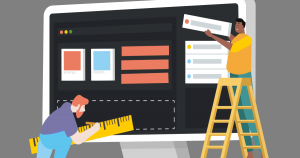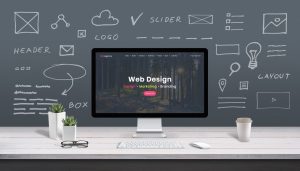
How the customers that visit your online business navigate around your website is of vital commercial importance. Having strong navigation design as an integral component of your website is not only expected by your visitors, but is now one of the differentiating factors that consumers use to choose the online businesses they buy from.
The design of an intuitive user interface has a number of rules that have developed as the commercial Internet has become a retail space in its own right. If your online business is developing an Internet presence for the first time, or you are designing new pages for your existing online business, getting the navigation right is crucial.
Navigation Checklist
The accessibility of the content within your online business should be at the top of your Internet design agenda. Customers want to locate the goods they want to buy quickly. Consistently after poor trolley and checkout systems, confusing navigation is highlighted by online consumers as a major cause of frustration when using commercial websites.
As the commercial Internet has developed, the large players in the market have begun to understand the DNA of what makes a successful E-commerce design. A large component of that design is navigation. It’s no surprise that the websites of the leading E-commerce businesses have similar navigation systems.
Use the guidance below to help you design intuitive navigation for your website:
Real-world Systems
The customers using your online business will understand the navigation systems that exist in the tactile world. Indexes, tabbed dividers and signposts have all been adapted for website design on the Internet. Think about the content you have on your website. Which real-world navigation system complements that content?
Navigation and Links
The customers that will use your website hate to feel lost as they click on links and move ever deeper into your store. Try and make it clear which page they are on, and where within the whole online business they are currently located. Always give your customers a fast way to move back to the home page of your online business. This is usually done by making your business logo – that should appear on every page to support your branding – a clickable link back to your home page.
Using breadcrumb trails on each page is a superb way to show your visitors precisely which page they are on. They can also then jump back to any previous page without having to move back to the homepage to start again.
Don’t Forget Search
Navigation within your online business must also integrate search. Most of your customers will look for a search option within your website design. If your website will contain thousands of items an accurate search component is absolutely essential to aid navigation.
Accessibility Issues
When you are designing your the navigation for your website don’t forget that your online business must be accessible to all. Accessibility legislation now extends to your website. Anyone no matter their disability ought to be able to navigate around your website with ease.
Don’t use colour as a key navigation aid as millions of people who might visit your site will be colour blind. Screen reading and magnifying software that is built into every computer operating system must be considered. Could someone that turns off the images and graphics within their Internet browser still navigate around your website? Don’t forget the Alt tags for every image!
Browser Compatibility
Today the compatibility issues that were once a major headache for website designers have largely been solved. However, it is still prudent to test your web pages in as many of the leading Internet browsers as you can. This is vital as your site navigation may not look or operate as you intended across all browser types, and browser versions.
Consistent Page Layout
When you are designing pages for your website always have each of the main components in the same place. Don’t for instance move the search field to different locations, or move the navigation between the left, right, top or bottom of your web pages. This not only confuses your customers, but makes them frustrated, which could result in them leaving your website entirely!

